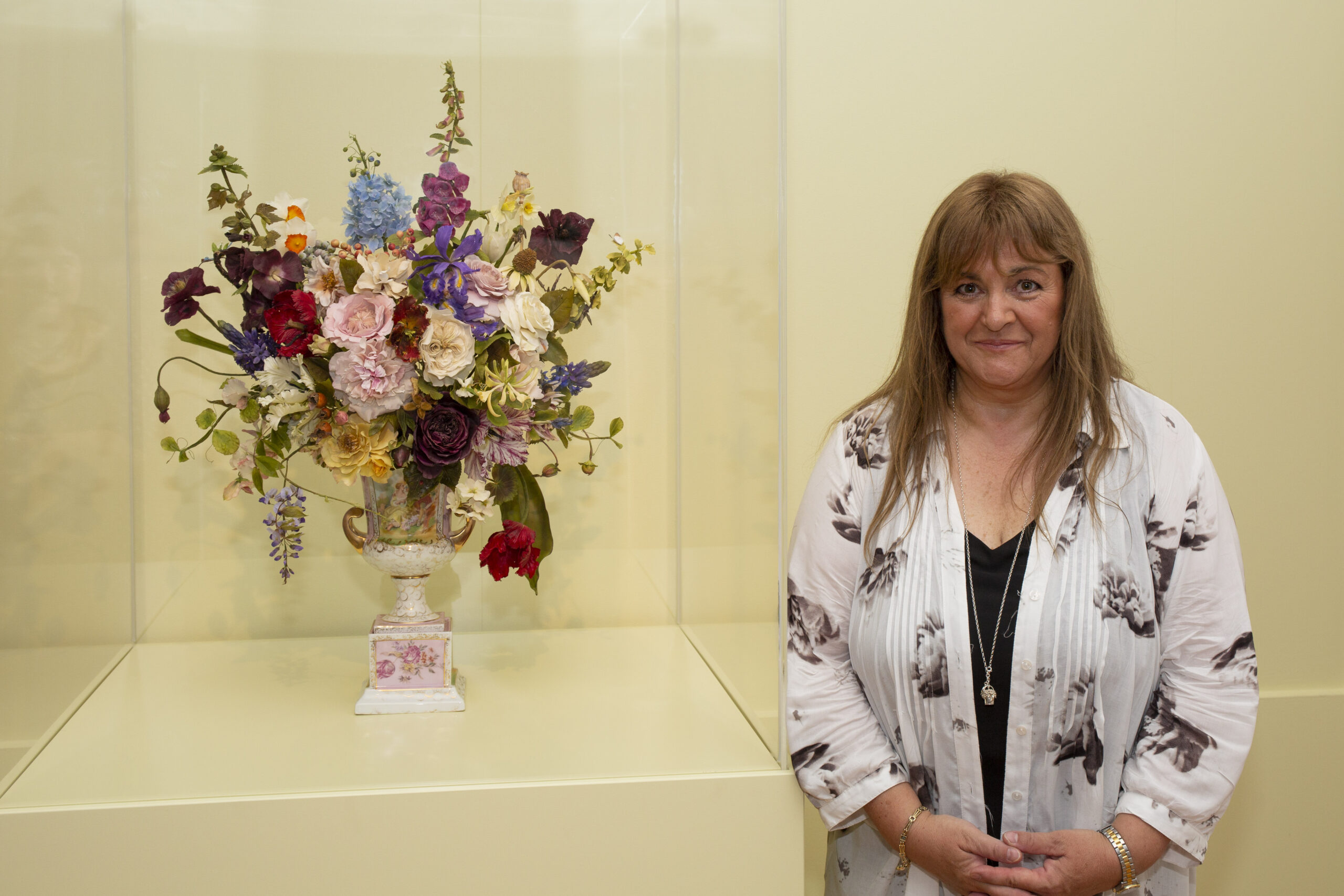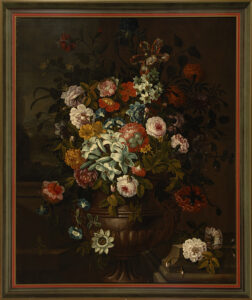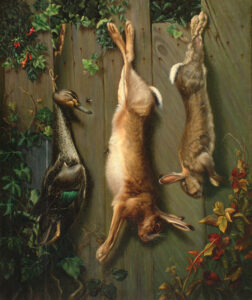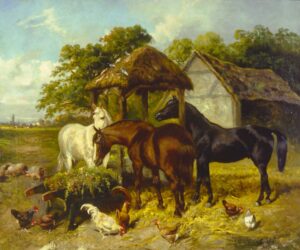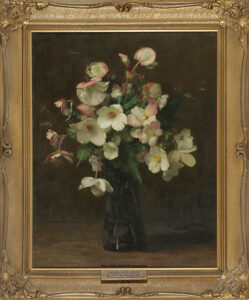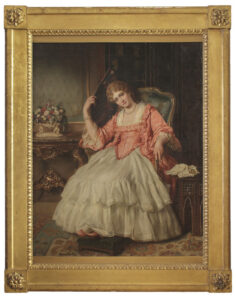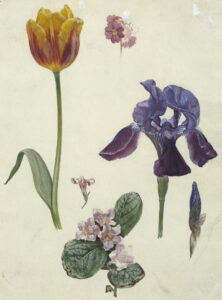MY CHOICE: Tracy Byatt / March 2021

March 2021: Tracy Byatt, artist
Each month a member of our community is invited to browse our online collection and select six of their favourite artworks. Each ‘My Choice’ selection, together with personal responses to the works, will be available to view on the Sarjeant Gallery website for one month at a time. The March 2021 My Choice has been selected by Tracy Byatt and is available to view until 31 March 2021.
Tracy Byatt is a unique artist who works in the unusual medium of sugar, and who’s exhibition An Impossible Bouquet is this year’s Pattillo Project, currently on view at Sarjeant on the Quay. Tracy was born in the United Kingdom and now lives in Turakina Valley, farming and working as a freelance medical proof reader. She was introduced to sugar work at an evening class but quickly moved from making generic cake flowers to self-taught sculptural works. With a lifelong interest in nature, botanical illustration and art history, her practice references a number of these traditions including Dutch still life paintings, sugar sculpture from the Renaissance period, the florilegium works of Joseph Banks and the glass botanical specimens of the Blaschka family.
“This absolute treasure has held my fascination since I first saw it on display a few years ago. The flowers of course are exquisite, made all the more dramatic against an unlit background, which itself holds many secrets. While most of the flowers are bathed in light, there are parrot tulips, carnations and Dutch irises waiting to be discovered in the shadows. It makes me question so many things. How did Baptiste study his flowers? Did he sketch them first? Did he dissect them? Did he wait for them to bloom for botanical correctness? If only paintings could talk! The undulating background landscape is something of a conundrum; it would seem perhaps unlikely that the artist saw this from his Amsterdam location considering the completely flat terrain of the Netherlands. The understated urn with its Bacchus mask relief appears to be classically Roman, so perhaps Baptiste had been inspired by a trip to Italy to paint such a landscape?”
“The fact that the game isn’t hung as a traditional brace but instead simply nailed to a rustic wooden fence gives me the notion this is the illicit spoils of a poacher’s bag! The soft tones of the underbelly fur of the hare and the rabbit, so skillfully painted, is complemented by the red climber in one corner while the duck’s speculum feathers are accentuated by the trailing green ivy in the other. The red flowers top left as an interrelation with the bottom right foliage hasn’t gone unnoticed. The rust stains on the fence and the attendant flies are tiny but wonderful observations and the glow of yellow light with the reddening vine to me echo an early autumn evening.”
“My heart skipped a beat when I saw a JF Herring Snr painting in the collection! (JF Herring Jnr painted in a similar style but was less talented than his father). It’s such a wonderfully familiar scene of a farmyard idyll; beautifully painted horses picking at hay, a litter of curious pigs and an assortment of scratching fowl, drawing the eye to a distant village. A family friend, who was the grandson of one of the pre-Raphaelite founders, had a Herring painting over the fireplace in his study and this painting immediately evokes memories of tired gundogs sprawled in front of an open fire. Looking at this painting, I can still smell wet dogs and wood smoke!”
“To me, this study is all at once a looser style of painting yet at the same time highly detailed. This study of begonias (odorata perhaps?) is a stunning observation of the plant at many growth stages – from tight buds to fully open white waxy flowers touched with the softest blush of pink. The glass vase is not immediately apparent but it’s painted with a flicker of reflected light at its base as a subtle invitation to take a closer look at the stems contained within.”
“At first glance I was overwhelmed by the elegance of this painting. The intense hue and detailing of the silk dress is quite splendid. On closer inspection, I find the young lady has an air of melancholy and while she appears to be looking at the artist, her gaze at the same time seems quite distant. With such a large Spanish style fan, perhaps she is fatigued by the summer heat? The acutely observed background continues to draw you in and one can’t help but notice the opulence of the damask wallpaper, the silk covered gilt chair, her discarded needlework, the marble topped Rococo table and the pedestal vase of flowers with the touch of a fallen petal, all exquisitely painted. The Moorish side table and the Berber rug make me think she could perhaps be of Spanish nobility?”
“These timeless watercolour studies are I’m sure as vibrant as the day they were painted. Coupled with faint graphite sketches, they are very accomplished and something I certainly aspire to! The tulip is particularly joyful and at the point of just going past its best – the petal on the right has begun to recurve and dry at the very tip, as has its leaf. The iris bud with its papery spathe is delightful. Although the pink flowers are unidentified, the top grouping are reminiscent of primulas, while the bottom sprig, after deliberating with learned friends, is likely of the Gesneriaceae family.”
Category
Past exhibitions 2021


